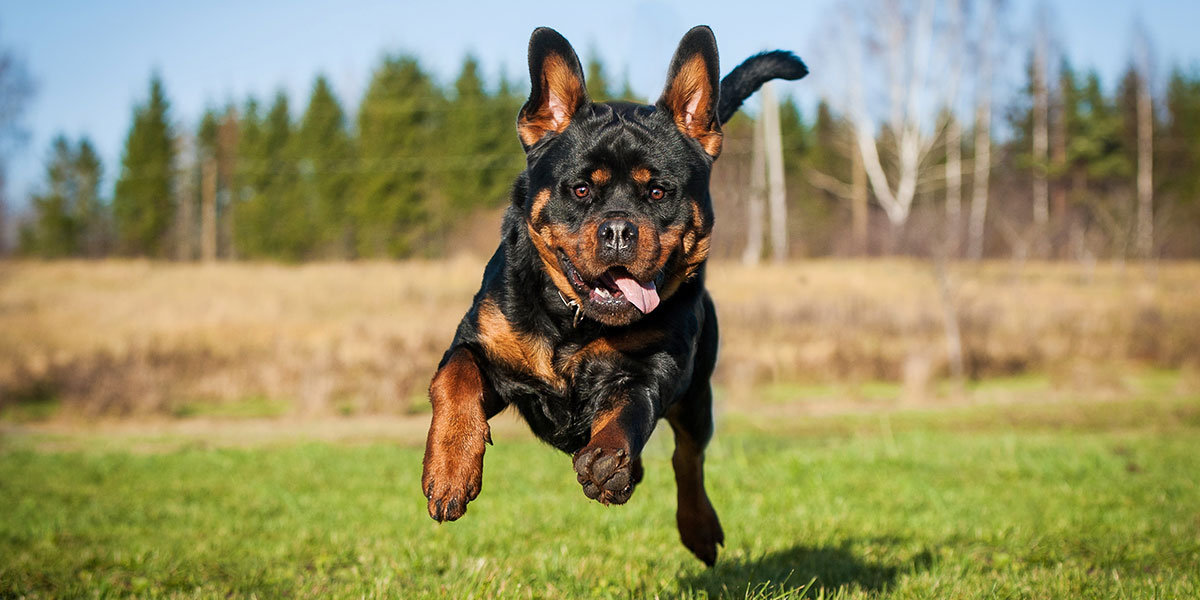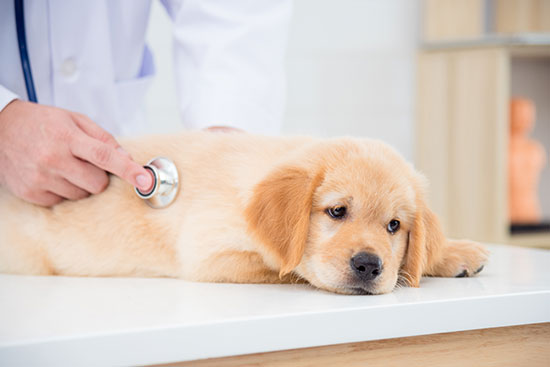What Is Canine Cranial Cruciate Rupture and How Can I Avoid One?
What Is a Cranial Cruciate Rupture in Dogs?
A dog’s cranial cruciate ligament is one of the main ligaments supporting the stifle joint (knee). Cranial cruciate rupture occurs when the ligament partially or completely tears. This frequently diagnosed chronic canine condition is called cranial cruciate ligament disease (CrCLD). Like a human’s ACL tear in a dog, a cranial cruciate rupture can be debilitating and extremely painful.
What Causes Cranial Cruciate Rupture in Dogs?
Most often, a combination of factors causes a cruciate tear in a dog. Genetics predispose certain breeds to developing CrCLD. In addition, other risk factors, like age, weight, and overall physical condition put dogs at risk. Plus, 50% of dogs that have a ligament tear in one leg will tear the cranial cruciate ligament in the other leg within six to twelve months of the first rupture.
Signs of Cranial Cruciate Tears in Dogs
CrCLD is a chronic condition in dogs, but the onset of noticeable symptoms often occurs suddenly or acutely. For example, your dog might suddenly hold up his or her affected leg.
Additional signs of an ACL tear in a dog include the following:
- Pain
- Decreased activity
- Disinterest in play
- Stiffness
- Trouble standing up
- Difficulty jumping to and from the car
- Limping and lameness
- Decreased muscle mass (atrophy)
- Reduced range of motion
- Swelling on the inside of the leg
- Popping noise when moving stifle
- Symptoms seem to improve with rest and worsen with exercise
The signs and symptoms of cranial cruciate ligament disease vary between dogs, but the condition almost always causes pain and dysfunction of the rear limbs.
Cranial Cruciate Ligament Disease Diagnosis
Diagnosing a dog with CrCLD usually requires a physical examination, x-rays, and possible further evaluation with arthroscopy. Physical examination reveals excessive forward motion of the tibia. Although x-rays can’t show an actual tear, they’re taken to rule out other problems and possibly reveal secondary signs of a rupture, such as osteoarthritis or joint fluid in the stifle. Your pet might require sedation to reduce pain and remain calm.
Treating Canine Cruciate Ligament Disease
Most pets, especially larger breeds, require surgical repair to strengthen the joint. Different surgical techniques can be used, including:
- Lateral fabellar
- Tibial plateau-leveling osteotomy (TPLO)
- Tibial tuberosity advancement (TTA)
Regardless of the type of surgery used, exercise restriction and canine rehabilitation (dog physical therapy) are essential. Following surgery, most pets return to normal function.
How Do I Prevent My Dog from Getting a Cranial Cruciate Rupture?
Dogs with cranial cruciate rupture can be successfully treated, but prevention is always the best medicine! Consider the following ways to reduce your dog’s chances of developing CrCLD.
7 Steps to Preventing Cranial Cruciate Tear in Dogs
1. Avoid Predisposed Breeds
Certain breeds are at high-risk of developing CrCLD due to genetic predisposition. These include:
- Golden retriever
- Bulldogs
- Labradors
- Rottweiler
- Mastiffs
- Newfoundland
- Akita
- St. Bernard
- American Staffordshire terrier
2. Manage Weight
Extra weight puts unnecessary stress on joints.
3. Provide Proper Nutrition
Though rare, nutritional deficiencies can increase your pet’s risk. If not already on an AFFCO approved dog food, like a homemade diet, switch your dog to an approved food or consult a veterinary nutritionist.
4. Keep Your Pet in Shape
Avoiding activities for which your pet has not been conditioned and keeping your pet in shape with regular exercise helps prevent all sorts of injuries. “Just like humans are prone to injury when they partake in a vigorous activity without proper training, so are our canine companions,” says Dr. Jessica Pizzillo, DVM, CCRP. “If your pet is normally a couch potato, a lively game of Frisbee or a long strenuous hike may not be in their best interest.”
5. Warm Up and Stretch
Warm up and stretch your dog prior to exercise to prevent injury. Our dog physical therapist can show you some very useful stretches.
6. Manage Related Medical Conditions
Underlying metabolic diseases, like hypothyroidisim or Cushing’s disease, can predispose a pet to developing CrCLD. Long-term steroid administration can weaken ligaments. Precautions should be taken with pets who require these medications.
7. Consider Delaying Your Pet’s Spay or Neuter
Recent studies have shown a possible correlation between early spay and neuter and cruciate disease in pets. There are pros and cons to delaying spay and neuter surgery. So, you should talk with a holistic veterinarian about possibly postponing your pet’s procedure to 14 months of age — especially if your pet’s a predisposed breed.
Give Your Pet Access to the Best Veterinary Care Available with Pet Insurance
Preparing you and your pet for unexpected health expenses with comprehensive insurance coverage can help offset the cost of one or possibly multiple surgeries, helping your pet return to normal function as quickly as possible with minimal damage to your bank account.
“The most important recommendation that I give to pet parents,” says Dr. Beerenstrauch, DVM, “is to get pet insurance. Even if you’re doing everything right, a cruciate rupture is often unavoidable because of the genetic predisposition some breeds have to developing the disease.”





